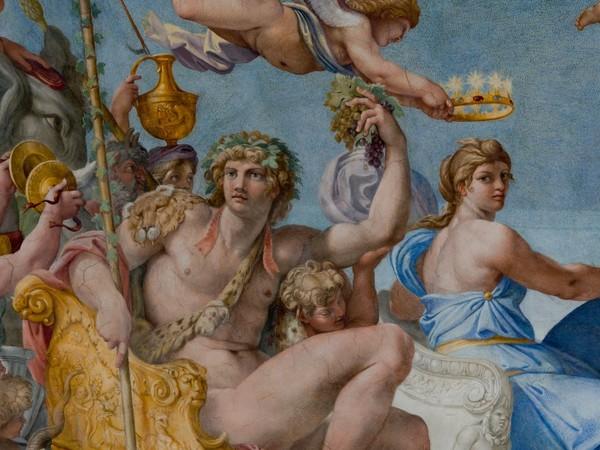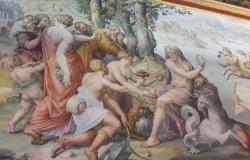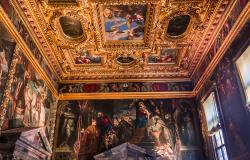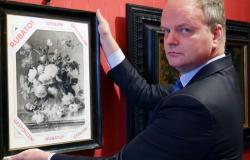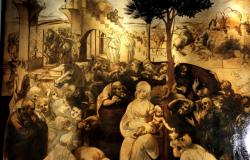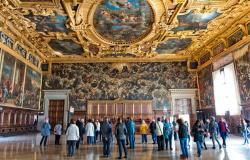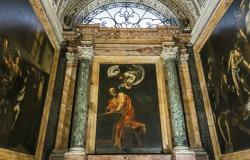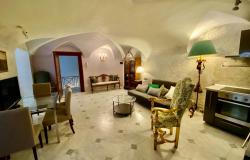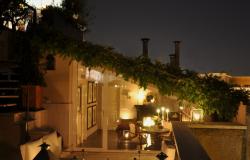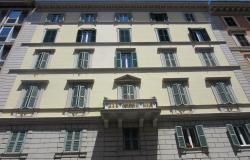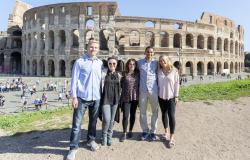[Image: Triumph of Bacchus and Ariadne, fresco from 'The Love of the Gods', Annibale Carracci, 1595-1605.]
The Galleria Carracci, a monumental fresco cycle in Rome’s Palazzo Farnese, has been restored and is now open for viewing.
“The Loves of the Gods”, painted between 1597 and 1608 by the Bolognese artist Annibale Carracci, his brother Agostino and their students, is credited with changing the painting style of the time, getting away from 16th-century Mannerism, while anticipating the Baroque and Classicism styles of Rome in the 17th century. The frescoes were greatly admired at the time and would be used for inspiration by subsequent generations of painters.
Carracci, under commission by Cardinal Odoardo Farnese, transformed the reception room of the Farnese Palace into a collection of classical pictures, with the main scene, the Triumph of Bacchus and Ariadne, occupying the center of the ceiling. Filled with color and movement, the painted frames recall classical antiquity, although revisited and reinterpreted through the art of Raphael, Michelangelo, Titian and Correggio.
The Farnese Gallery is located in the west wing of the Palazzo Farnese, now the French Embassy. Palazzo Farnese is one of the most important High Renaissance palaces in Rome, to which major artists of the 16th century, including Michelangelo and Giacomo della Porta, contributed. First designed in 1517 for the Farnese family, the building expanded when Alessandro Farnese became pope in 1534.
The restoration work was jointly funded by the World Monuments Fund, the world's largest private organization for the protection of historic monuments, and by Rome's special superintendent's office for museums.
The gallery will be open to visitors three days a week. Reservations must be made online here.
